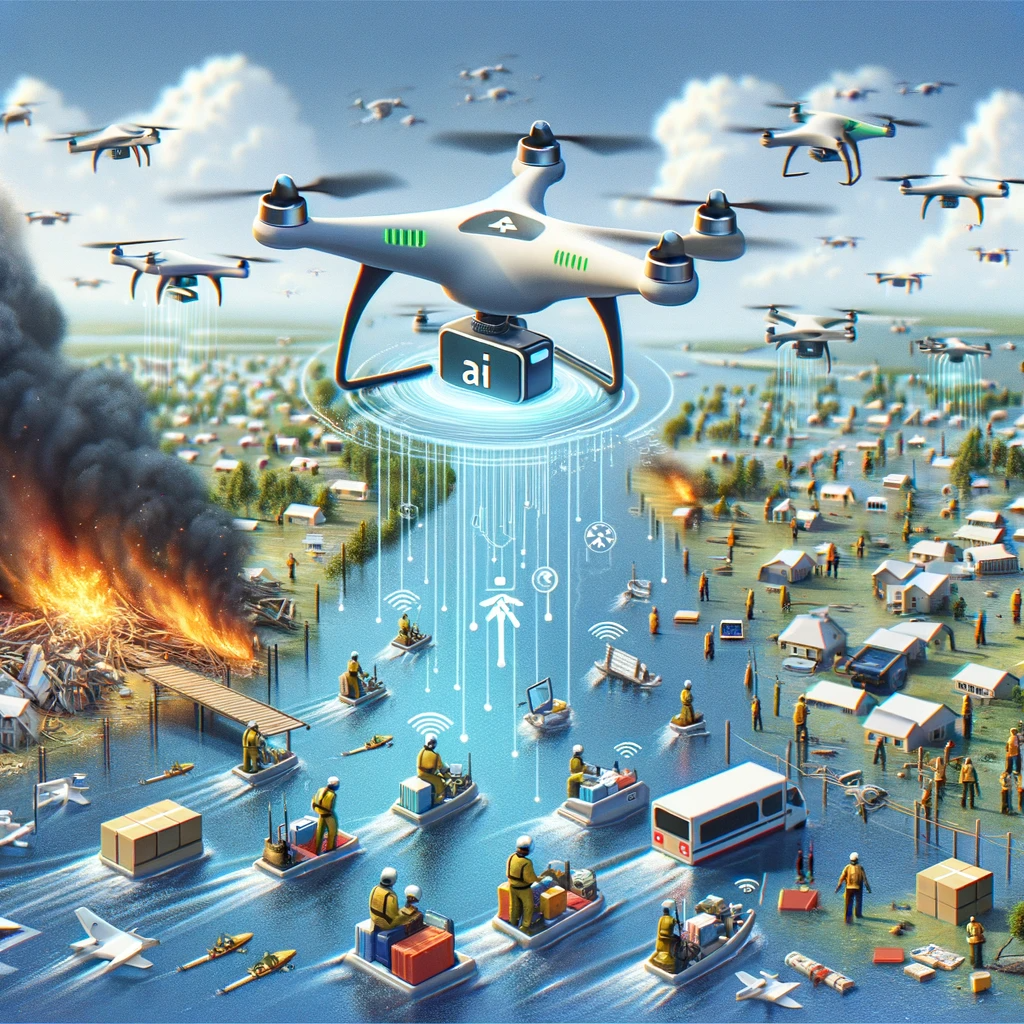Nature’s fury knows no bounds. From devastating hurricanes to relentless wildfires, and seismic tremors that shake the earth, natural disasters have the power to unleash chaos and destruction on an unprecedented scale. In the face of such cataclysms, rapid and effective emergency response can mean the difference between life and death. As the frequency and intensity of these disasters continue to rise, a remarkable ally has emerged to bolster our resilience: Artificial Intelligence (AI).
In an era marked by technological leaps, AI is revolutionizing the way we prepare for, respond to, and recover from natural disasters. Its ability to process vast amounts of data, analyze patterns, and make real-time decisions is fundamentally changing the landscape of emergency management. From predicting impending disasters to coordinating response efforts with unparalleled precision, AI is at the forefront of our defense against nature’s fury.
This article delves into the critical role played by AI in enhancing emergency response systems for natural disasters. We will navigate through the realms of disaster prediction, early warning systems, response coordination, and post-disaster rehabilitation, uncovering the myriad ways in which AI is reshaping our approach to disaster resilience. As we embark on this journey, it becomes abundantly clear that AI is not just a technological marvel; it’s a beacon of hope in our battle against the forces of nature.
The Reality of Natural Disasters
Our planet is no stranger to the wrath of natural disasters. They strike with little warning, leaving devastation in their wake. Floods inundate communities, wildfires consume forests, and earthquakes shatter cities. The frequency and severity of these disasters are on the rise, exacerbated by climate change and urbanization. As populations grow and cities expand, the potential for disaster-related casualties and damage intensifies. The urgency to fortify our emergency response systems has never been greater.
The Rise of AI in Emergency Management
Amid the relentless assault of natural disasters, AI has emerged as a beacon of hope. Its versatility and adaptability make it an invaluable tool in disaster response and recovery. AI can process and analyze vast datasets in real-time, enabling it to detect patterns and anomalies that escape human perception. This capability, combined with its ability to make rapid decisions, positions AI as an indispensable asset in emergency management.

Predicting and Detecting Disasters with AI
AI’s predictive prowess is transforming disaster management. It can forecast hurricanes, analyze wildfire behavior, and identify seismic activity trends. AI-driven early warning systems provide invaluable lead time for evacuation and preparedness, saving lives in the process. From weather modeling to seismic analysis, AI harnesses the power of data to anticipate and detect disasters more accurately than ever before.
Coordinating Response Efforts
Disasters demand swift and coordinated responses. AI streamlines this coordination. It aids in decision-making by providing real-time information on disaster progression and resource allocation. AI-powered communication systems ensure that responders are equipped with up-to-the-minute data, facilitating efficient and effective action. The result is a more synchronized response to disaster events.
Disaster Recovery and Rehabilitation
The aftermath of a disaster is a daunting landscape of damage and destruction. AI assists in the assessment of post-disaster damage, enabling responders to prioritize and allocate resources strategically. Moreover, AI plays a pivotal role in optimizing resource distribution during rehabilitation efforts, ensuring that aid reaches those in need swiftly and efficiently. It expedites recovery, helping communities rebuild and heal.
Ethical and Privacy Considerations
While AI is a powerful tool, its use in emergency management raises ethical and privacy concerns. The responsible use of data and algorithms is paramount. Striking a balance between the benefits of AI and the protection of individuals’ privacy and rights is a challenge that requires careful consideration.
Success Stories and Future Prospects
The world has already witnessed the transformative impact of AI in emergency management. From hurricane tracking to earthquake prediction, AI has saved lives and reduced damage. Looking ahead, the future is promising. AI will continue to evolve, offering new capabilities and possibilities in disaster resilience. Ongoing research and innovation ensure that AI’s role in emergency management will only grow in significance.
Conclusion
In conclusion, the partnership between AI and emergency response systems is a beacon of hope in an era marked by rising natural disasters. From prediction to recovery, AI enhances our ability to protect lives, property, and the environment. As we confront the escalating challenges of a changing climate, AI stands as a steadfast ally, reinforcing our capacity to respond to nature’s fury with resilience and resolve. The future of emergency management is undeniably intertwined with the transformative power of AI.
